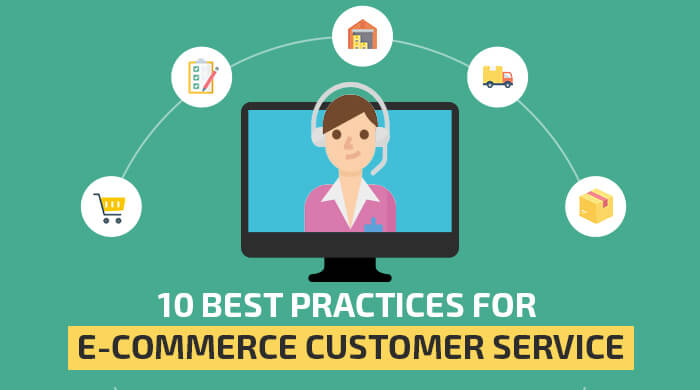
In the dynamic world of e-commerce, customer service plays a pivotal role in shaping the success and longevity of online businesses. With the proliferation of online shopping, customers have come to expect seamless and personalized experiences throughout their purchasing journey. E-commerce customer services encompass a wide range of activities aimed at providing support and assistance to customers before, during, and after their purchase. In this comprehensive guide, we’ll delve into the importance of e-commerce customer services, explore critical components, discuss best practices, and provide insights into addressing challenges faced by e-commerce businesses.
Understanding E-commerce Customer Services
A. The Significance of Customer Services in E-commerce E-commerce customer services are fundamental to building trust, fostering loyalty, and driving repeat business in the competitive online marketplace. By offering exceptional customer experiences, companies can differentiate themselves from competitors and establish a strong brand reputation.
B. Key Components of E-commerce Customer Services
-
Pre-purchase Assistance: Guiding customers through the purchasing process and helping them make informed decisions.
-
Order Management and Fulfillment: Ensuring smooth order processing, tracking, and timely delivery of products.
-
Post-purchase Support and Follow-up: Addressing customer inquiries, collecting feedback, and nurturing relationships post-purchase.
Pre-purchase Assistance
A. Providing Product Information and Recommendations. Offering detailed product descriptions, specifications, and images to help customers make informed purchase decisions and utilizing product recommendation algorithms and personalized recommendations based on browsing and purchase history.
B. Assisting with Purchase Decisions. Offering live chat support, email, or phone assistance to address customer inquiries and concerns in real-time and providing virtual shopping assistance through interactive tools such as virtual try-ons or product configurators.
C. Offering Live Chat and Customer Support Channels Implementing live chat software to provide instant support and assistance to customers browsing the website and offering multiple communication channels such as email, phone support, and social media messaging to cater to diverse customer preferences.
Order Management and Fulfillment
A. Ensuring Smooth Order Processing Streamlining the checkout process to minimize friction and reduce cart abandonment rates. Implementing robust order management systems to track orders, manage inventory, and prevent overselling.
B. Providing Order Tracking and Status Updates Offering order tracking functionalities to allow customers to monitor the status of their orders in real-time and sending proactive order status updates and shipping notifications via email or SMS to keep customers informed.
C. Handling Shipping and Delivery Logistics Partnering with reliable shipping carriers and logistics providers to ensure timely and secure delivery of orders. Offering flexible shipping options such as express shipping, same-day delivery, or click-and-collect to cater to different customer needs.
Post-purchase Support and Follow-up
A. Addressing Customer Inquiries and Concerns Providing responsive customer support to address post-purchase inquiries, resolve issues, and handle complaints, as well as implementing a ticketing system or customer service platform to track and manage customer inquiries efficiently.
B. Soliciting Feedback and Reviews Sending post-purchase surveys or feedback requests to collect insights and gauge customer satisfaction levels and encouraging customers to leave reviews and ratings on products to build social proof and credibility.
C. Engaging Customers with Personalized Communication Send personalized follow-up emails or SMS messages to thank customers for their purchases and provide additional value. Offer loyalty rewards, discounts, or exclusive offers to incentivize repeat purchases and foster customer loyalty.
Returns and Refunds Handling
A. Implementing a Seamless Returns Process Offering a hassle-free returns policy with clear instructions and guidelines for returning products and providing multiple return options such as mail-in returns, in-store returns, or third-party drop-off locations.
B. Processing Refunds in a Timely Manner Ensuring prompt processing of refunds once returned items are received and inspected. They are automating refund processes where possible to expedite processing and improve efficiency.
C. Minimizing Returns and Preventing Fraudulent Activities Implementing product reviews and user-generated content to provide more accurate product information and reduce returns and utilizing fraud detection tools and security measures to identify and prevent fraudulent return activities.
Leveraging Technology for E-commerce Customer Services
A. E-commerce Platforms and CRM Systems Integrating customer relationship management (CRM) systems with e-commerce platforms to centralize customer data and interactions. Utilizing customer data analytics and insights to personalize customer experiences and improve E-commerce Customer Services delivery.
B. Chatbots and AI-powered Customer Service Solutions Implementing chatbots or virtual assistants to handle routine customer inquiries and provide instant support and utilizing artificial intelligence (AI) and machine learning algorithms to analyze customer interactions and provide personalized recommendations.
C. Integrating Customer Service Tools with E-commerce Websites Integrating live chat software, helpdesk systems, and customer support widgets directly into e-commerce websites for seamless customer interactions and utilizing omnichannel customer service platforms to unify customer communications across various channels and touchpoints.
Case Studies: Successful Implementation of E-commerce Customer Services
A. Case Study 1: Enhancing Customer Satisfaction with Proactive Support
B. Case Study 2: Streamlining Order Management for Improved Efficiency
C. Case Study 3: Boosting Customer Loyalty through Exceptional Post-purchase Support
Best Practices for E-commerce Customer Services
A. Prioritizing Customer Satisfaction and Experience
B. Providing Multichannel Support Options
C. Investing in Ongoing Training and Development
Challenges and Solutions in E-commerce Customer Services
A. Handling High Volumes of Customer Inquiries
B. Balancing Personalization with Efficiency
C. Addressing Cross-border and International Customer Service Challenges
Conclusion
Effective e-commerce customer services are essential for building trust, fostering loyalty, and driving business growth in the competitive online marketplace. By prioritizing customer satisfaction, leveraging technology, and implementing best practices, e-commerce businesses can deliver exceptional customer experiences and thrive in an ever-changing digital landscape. As customer expectations continue to evolve, staying agile and responsive to customer needs will be critical for maintaining a competitive edge and achieving long-term success.





